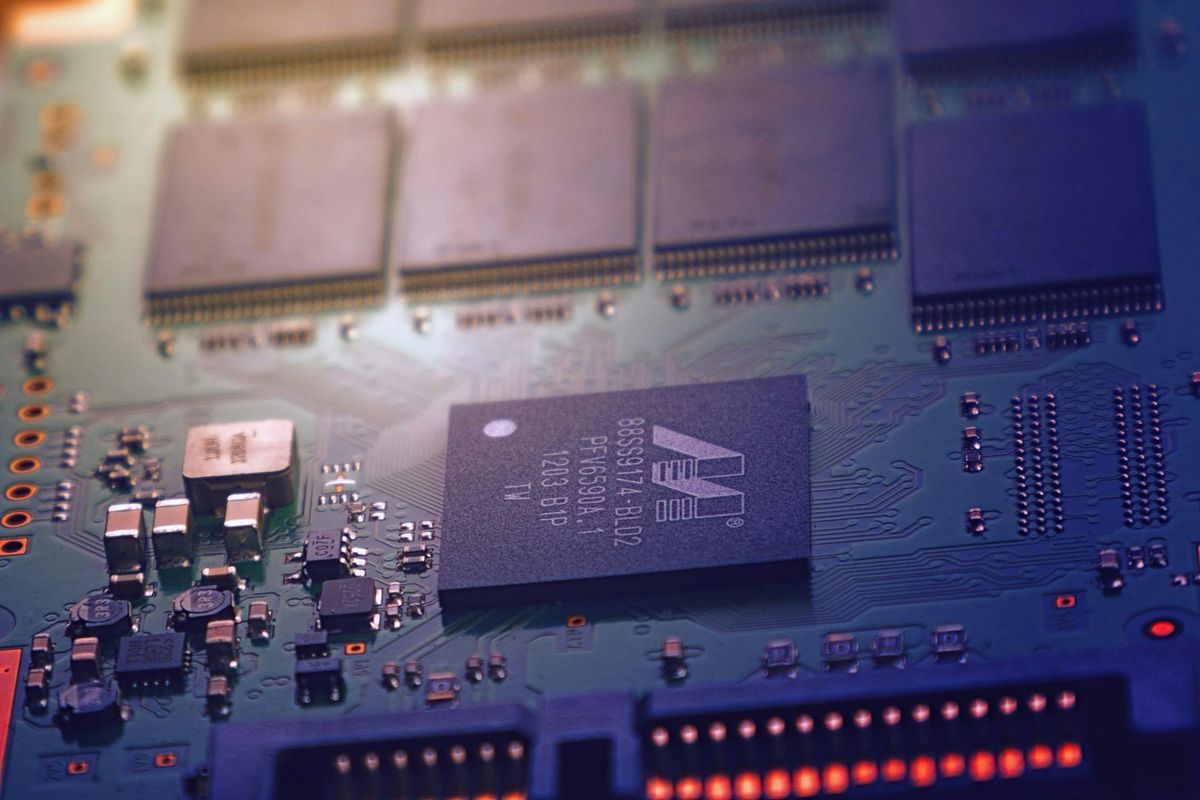The world we live in today is intricately woven with an invisible thread – the microchip. These tiny pieces of metal, often referred to as semiconductors or integrated circuits, are the beating hearts of our technological renaissance. From the smartphones in our pockets to the cutting-edge military systems guarding nations, microchips have become the currency of geopolitical power. 💰🔍
In a twist of irony, the very technology that was supposed to foster global interconnectedness and mutual prosperity has sparked a new kind of war – one fought not on traditional battlefields, but in government offices and corporate boardrooms. This is the Microchip War, a clash of titans vying for supremacy in an arena where the stakes are higher than ever before. 🏢💥
The Silicon Valley Revolution 💻👩💻
The roots of this conflict can be traced back to the late 1950s when two American engineers, working independently, had a revolutionary idea. They envisioned a world where complex electronic circuits could be etched onto a single piece of silicon, paving the way for the birth of the microchip. 💡🔬
This groundbreaking innovation kickstarted a technological revolution, with the United States leading the charge. Companies like Texas Instruments and Intel spearheaded the development of increasingly sophisticated chips, enabling everything from home computing to space exploration. 🚀🌍
As the years rolled by, the number of transistors – the tiny on-and-off switches that power microchips – grew exponentially, doubling and redoubling with each passing decade. What started as a mere handful of transistors soon became millions, then billions, packed onto a silicon wafer no larger than a fingernail. 🤯💻
The Rise of the Asian Tigers 🐅🌏
While the United States basked in its technological prowess, the economic miracles unfolding in East Asia posed a new challenge. Countries like Japan began to master the art of chip manufacturing, offering cheaper alternatives to American products. 🇯🇵💰
Sensing a threat, the U.S. government took decisive action, imposing a 100% tax on Japanese chips entering the country – a move that effectively crushed Japan’s budding semiconductor industry. 🚫🛃
But another contender was already on the horizon: Taiwan. 🇹🇼⬆️
With a brilliant strategy, Taiwan positioned itself as the world’s premier chip manufacturer, leveraging its highly skilled engineers and government support. The formation of the Taiwan Semiconductor Manufacturing Company (TSMC) marked a pivotal moment, as the island nation became the go-to destination for chip fabrication (or “fabs,” as they’re known in the industry). 🏭💪
The Dragon Awakens 🐉🇨🇳
As Taiwan solidified its position in the microchip supply chain, a new player emerged – one that would forever alter the geopolitical landscape. China, the world’s most populous nation, was rapidly ascending as an economic powerhouse, and it had its sights set on technological dominance. 🌐💯
Recognizing the strategic importance of microchips, China embarked on an ambitious quest to break free from its reliance on foreign suppliers. The goal was twofold: to develop a self-sufficient semiconductor industry and to bolster its military capabilities with cutting-edge chips. 🔓⚔️
However, China’s aspirations were met with resistance from the United States, which sought to maintain its technological edge and prevent its rival from gaining a military advantage. Thus began a high-stakes game of tug-of-war, with each side employing various tactics to outmaneuver the other. 🧗♀️🔀
Rules, Regulations, and Retaliation ⚖️🛡️
As the conflict intensified, the battleground shifted to the realm of rules and regulations. The United States leveraged its position as the kingpin of the microchip supply chain, enacting export controls and sanctions to limit China’s access to advanced chip technology. 📜🚫
In response, China ramped up its efforts to develop indigenous chip manufacturing capabilities, pouring billions into research and development. However, despite significant strides, the nation still found itself trailing behind the cutting edge. 🇨🇳💰📈
The tension reached a boiling point when former U.S. Speaker of the House Nancy Pelosi visited Taiwan in 2022, sparking outrage from China, which viewed the move as a challenge to its sovereignty over the island. 🇺🇸🇹🇼💥
As the world watched with bated breath, the microchip war escalated, with both sides employing increasingly aggressive tactics to gain the upper hand. 👀⏫
A War Without Borders 🌐💻⚔️
The ramifications of this conflict extend far beyond the realms of geopolitics and military might. Our daily lives are inextricably intertwined with microchips, from the smartphones we carry to the smart home devices that make our lives more convenient. 📱🏡
As the battle for technological supremacy rages on, the ripple effects are felt across industries and nations. Supply chain disruptions, trade barriers, and economic uncertainties have become the new normal, impacting everything from consumer electronics to advanced scientific research. 📉🔍
Moreover, the microchip war has sparked a global race for talent, with nations vying to attract and retain the brightest minds in engineering and software development. The future, it seems, belongs to those who can harness the power of silicon. 🧠👩💻
A Fragile Balance on the Cutting Edge 🔪🌐
As we stand on the precipice of a new era, the microchip war serves as a stark reminder of the fragility of our interconnected world. The delicate balance between cooperation and competition, innovation and regulation, hangs in the balance. 💫⚖️
Will cooler heads prevail, leading to a new era of collaboration and shared prosperity? Or will the pursuit of technological dominance plunge us into a perpetual state of conflict, with nations jockeying for position on the cutting edge? 🤝🔮
Only time will tell, but one thing is certain: the battle for microchip supremacy will shape the course of human civilization for generations to come. 🌍💻⌛
Copyright © 2025 Hea1th.net

